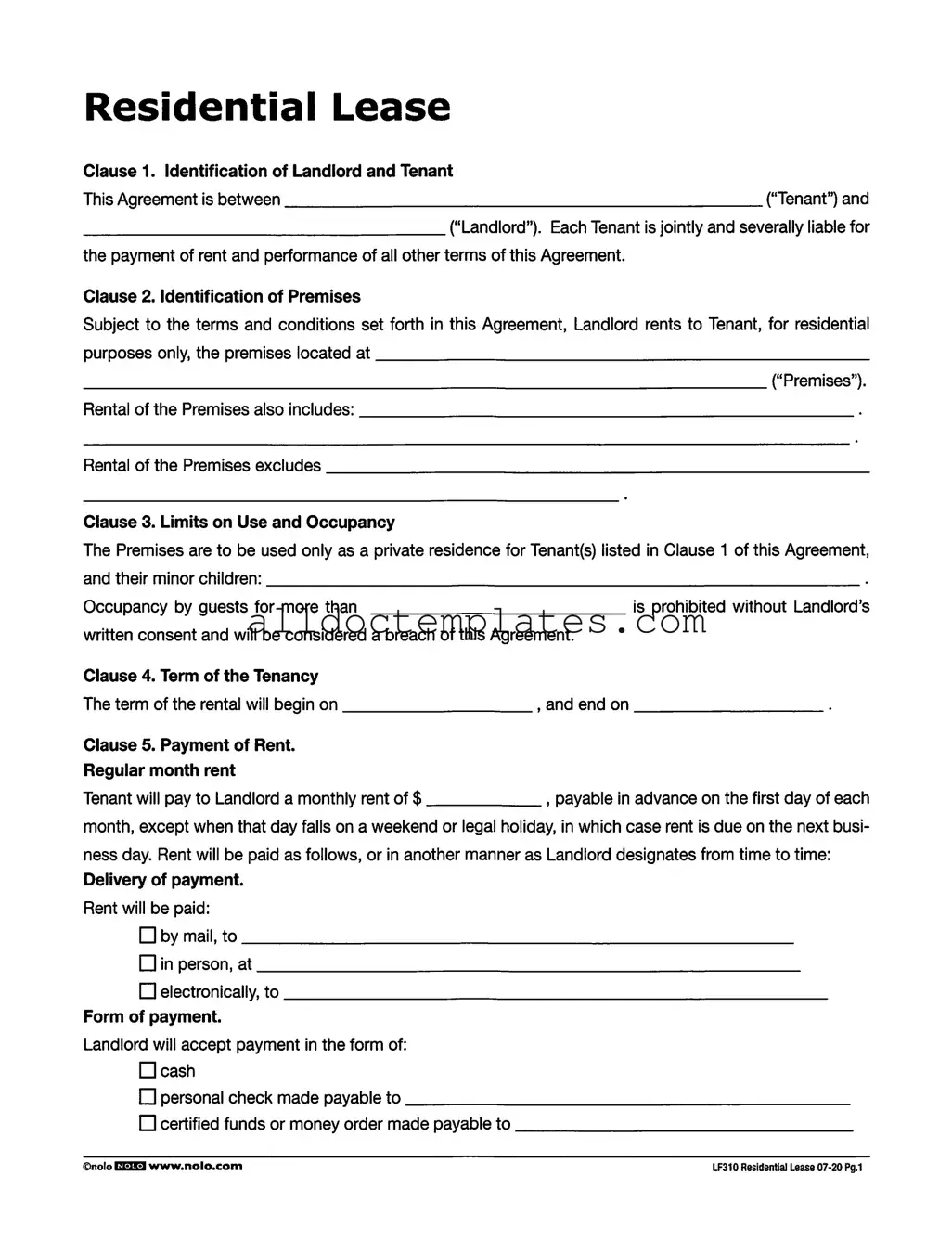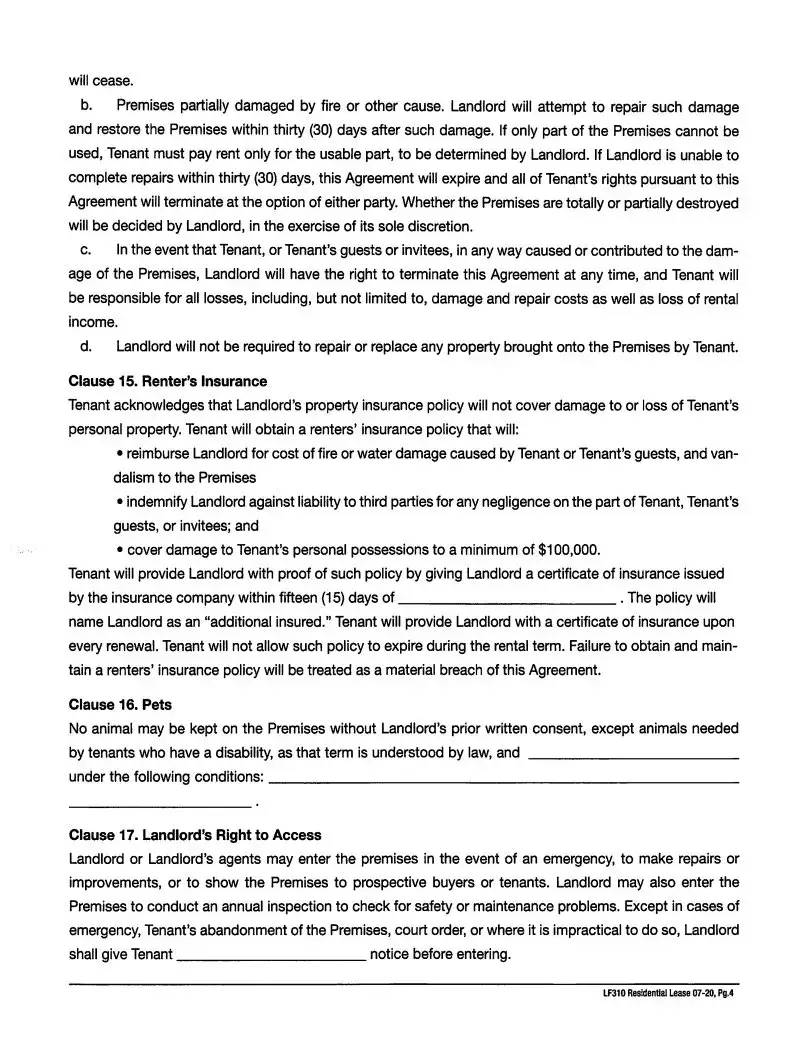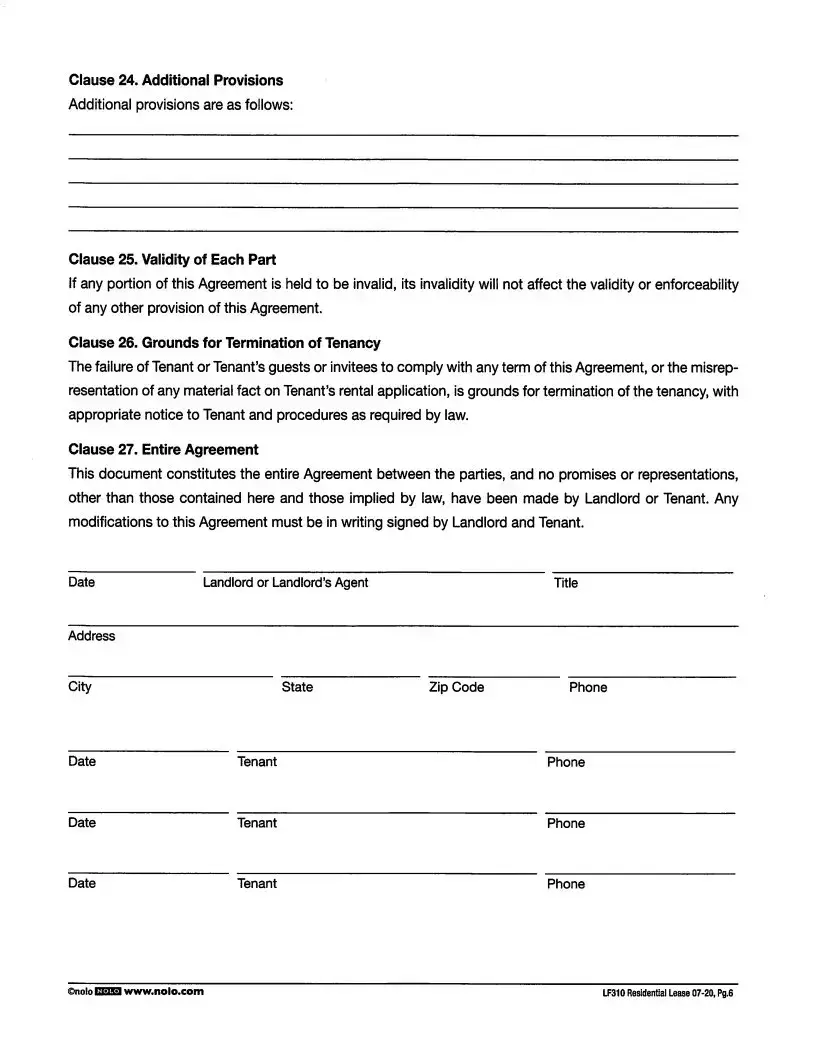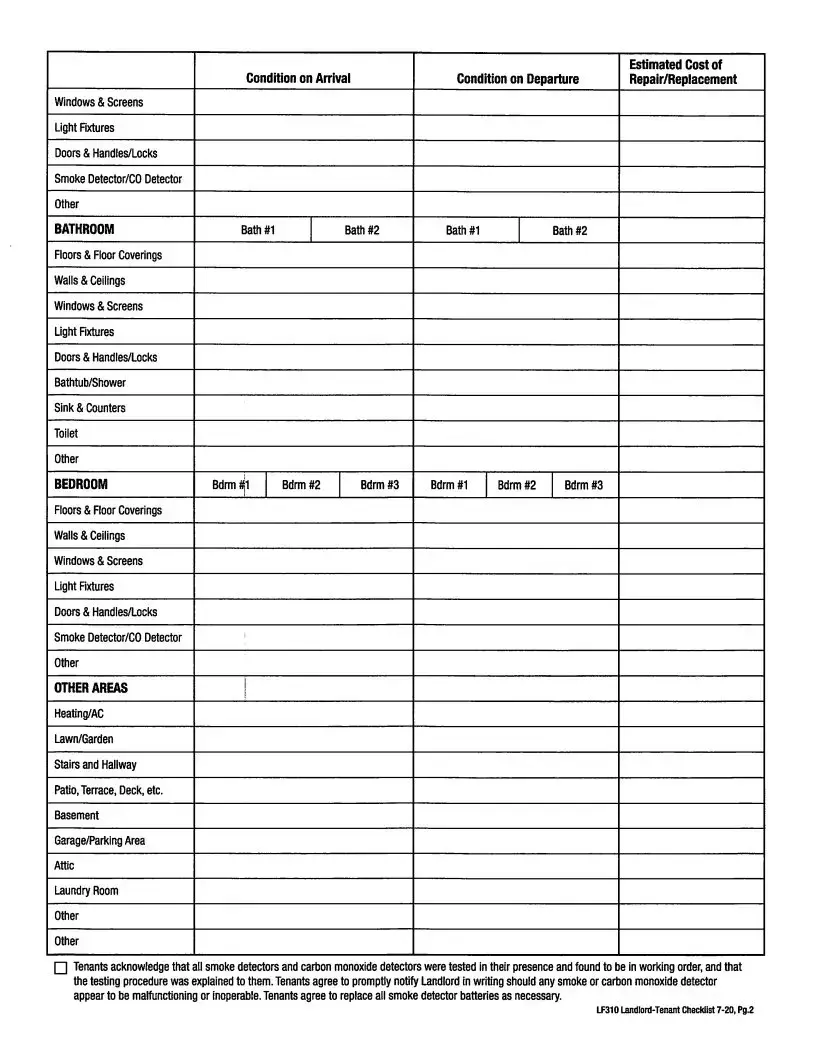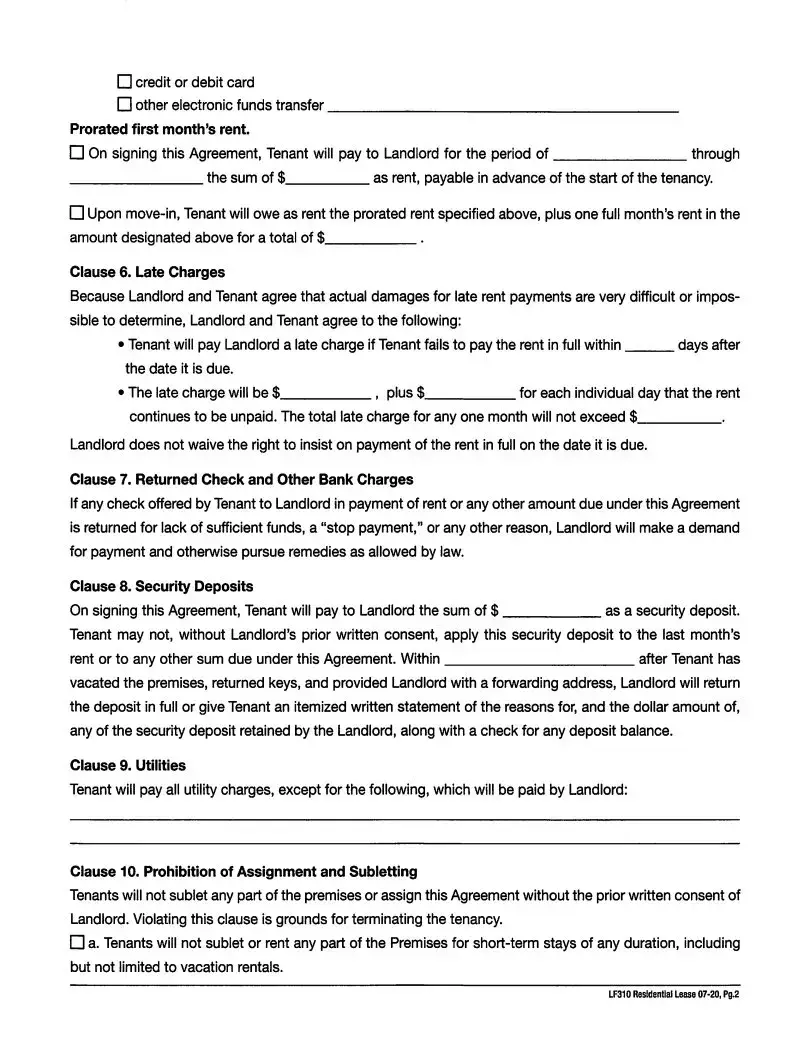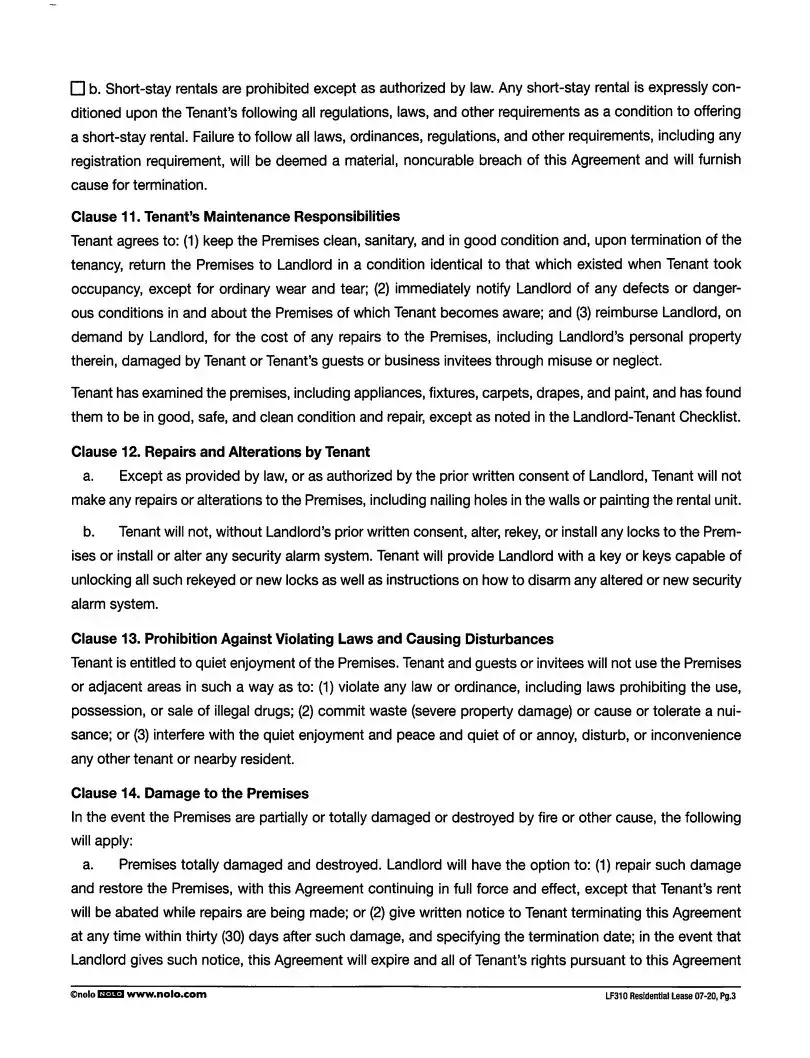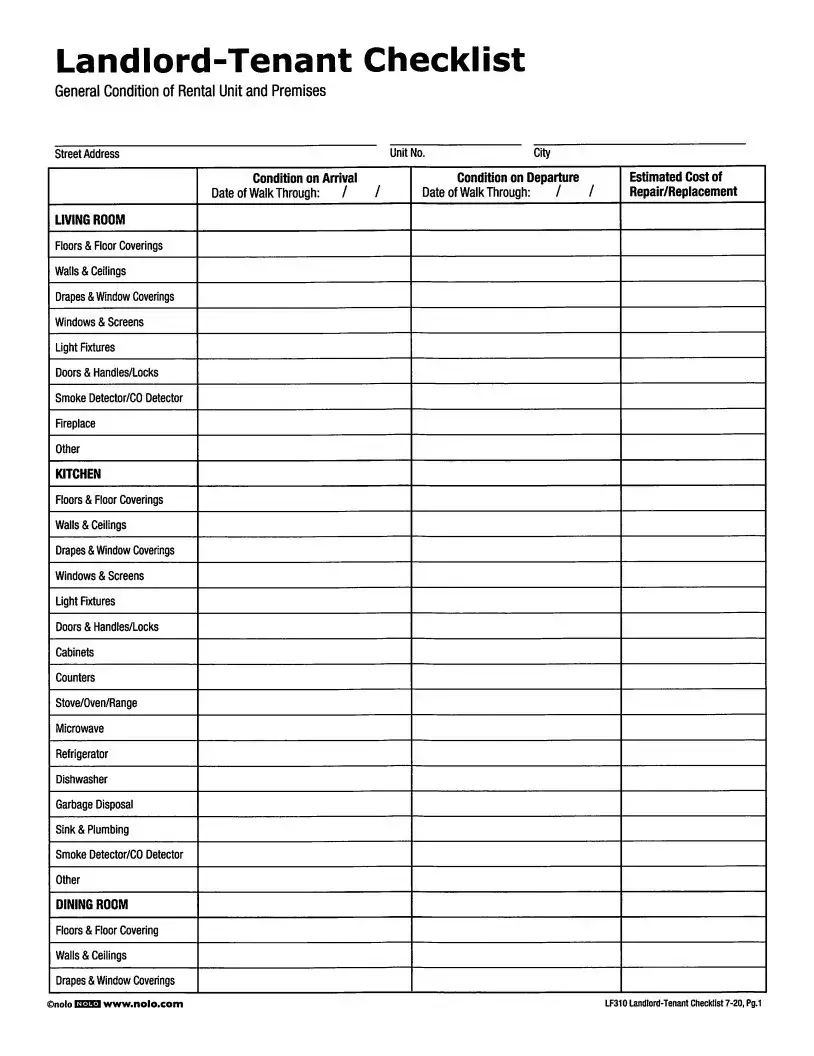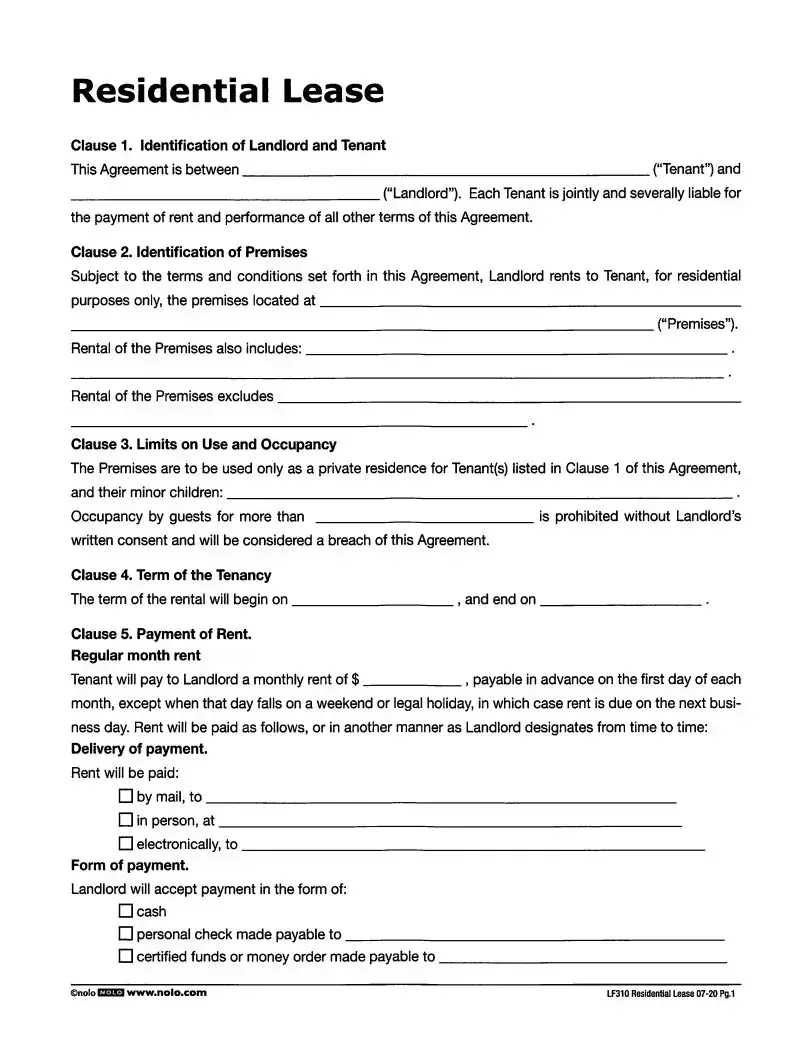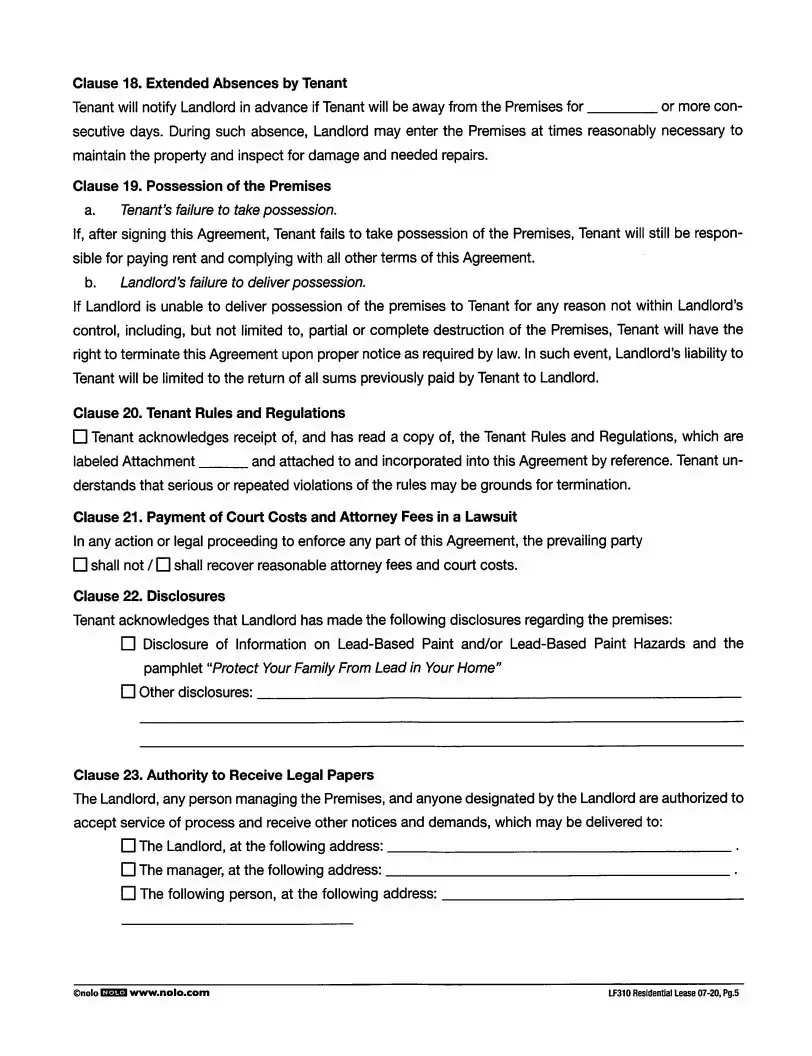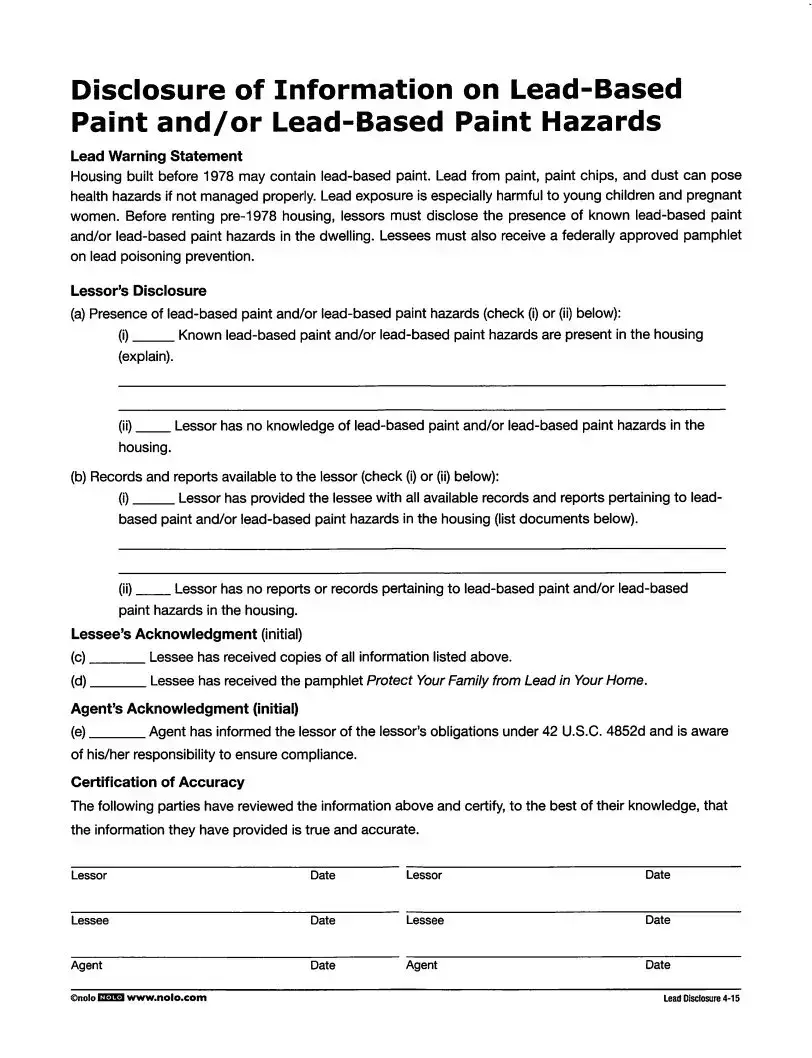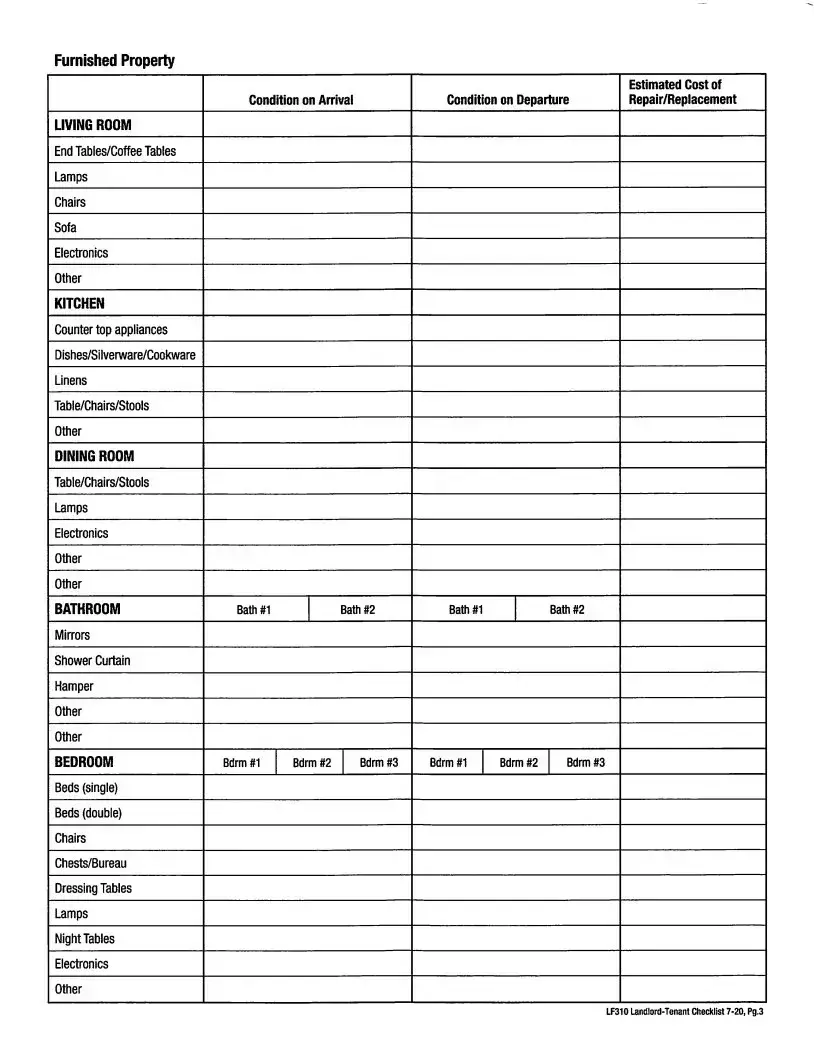Fill in a Valid Lf310 Residential Lease Form
The LF310 Residential Lease form is a legal document that outlines the agreement between a landlord and tenant for renting a residential property. It specifies important details such as the identification of both parties, the rental premises, payment terms, and rules regarding occupancy. Understanding this form is essential for both landlords and tenants to ensure a smooth rental experience.
Get Your Form Now
